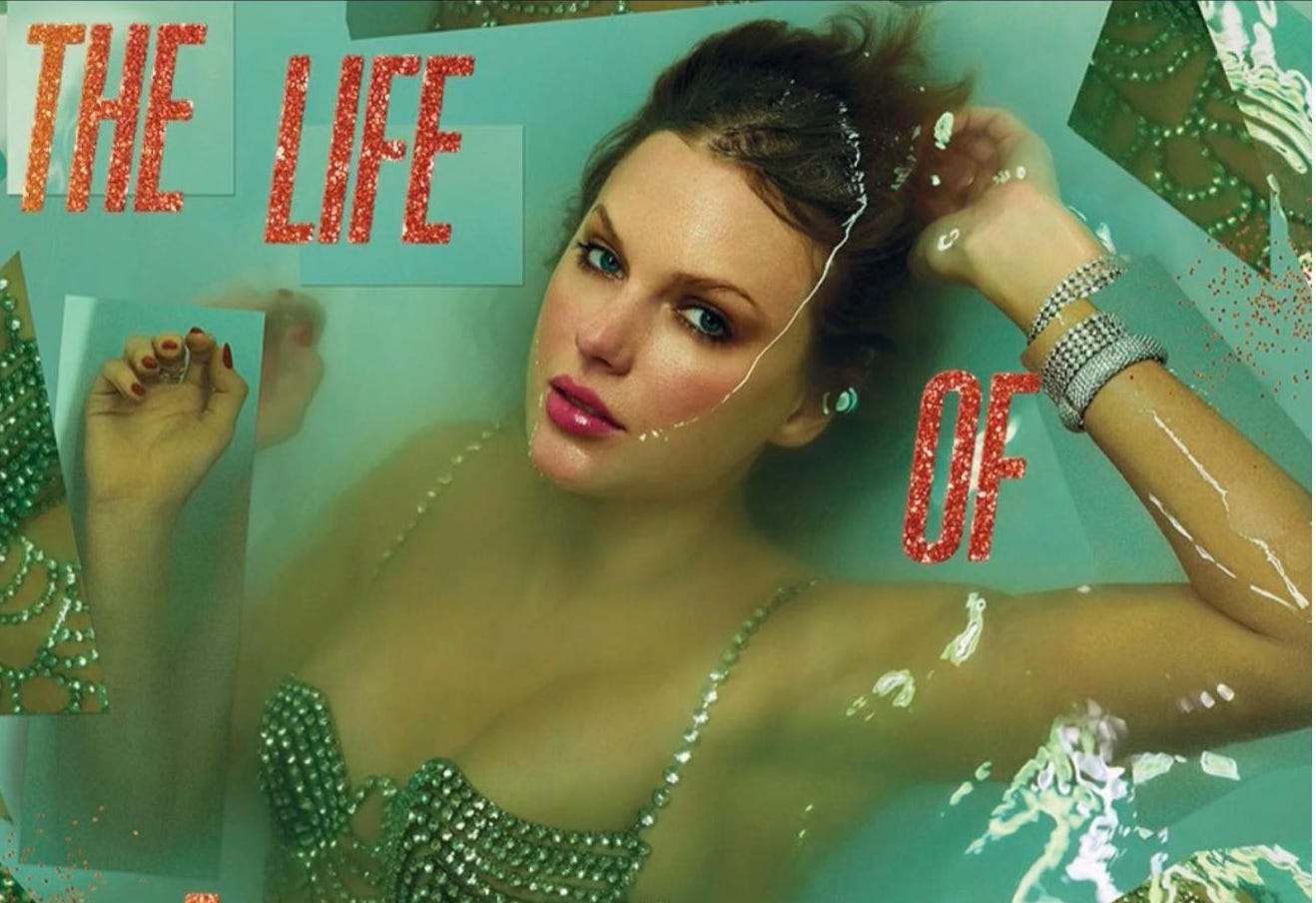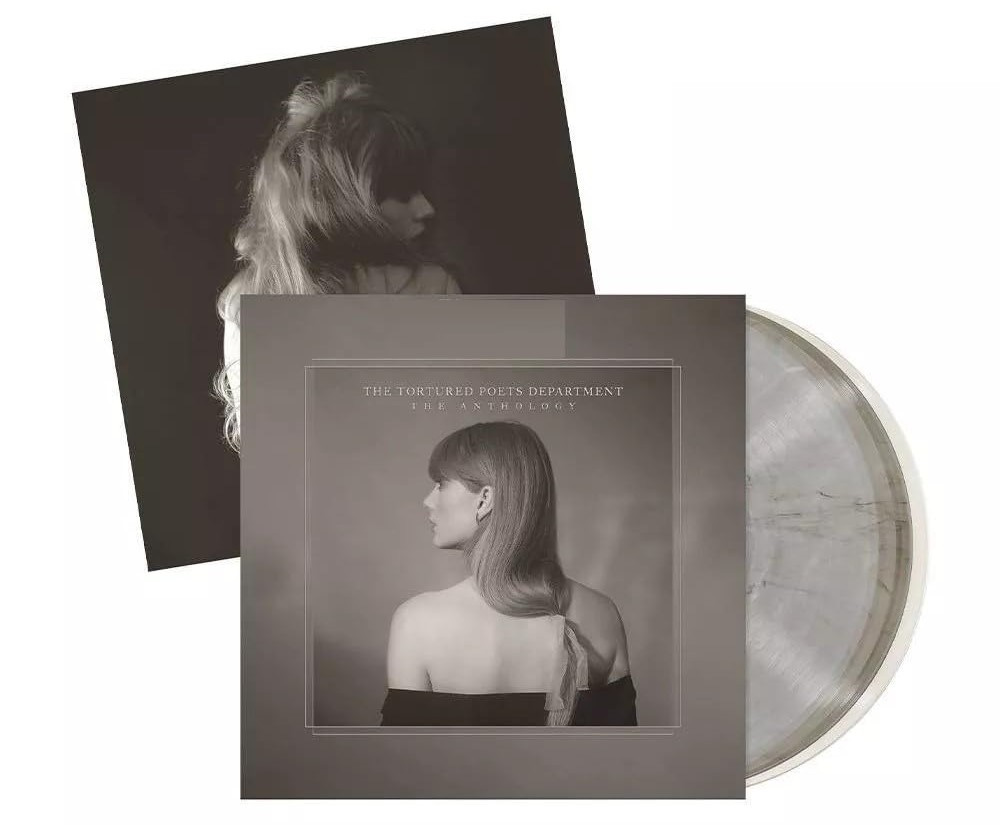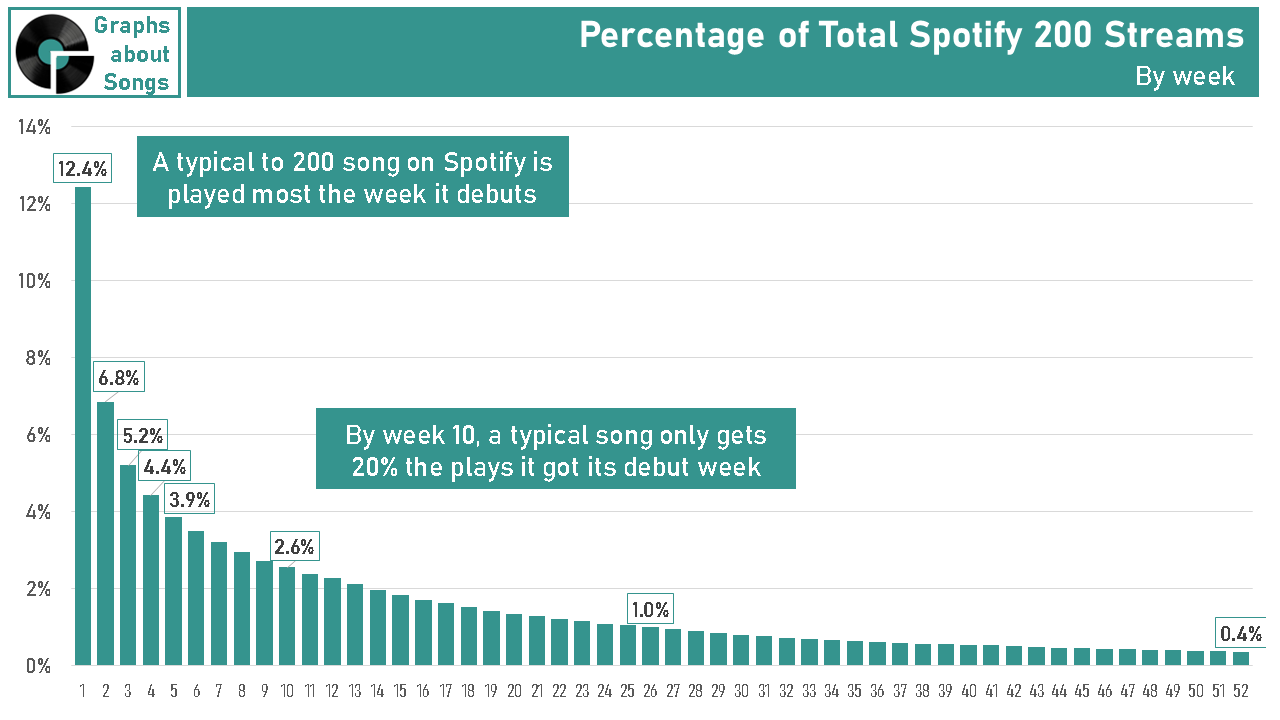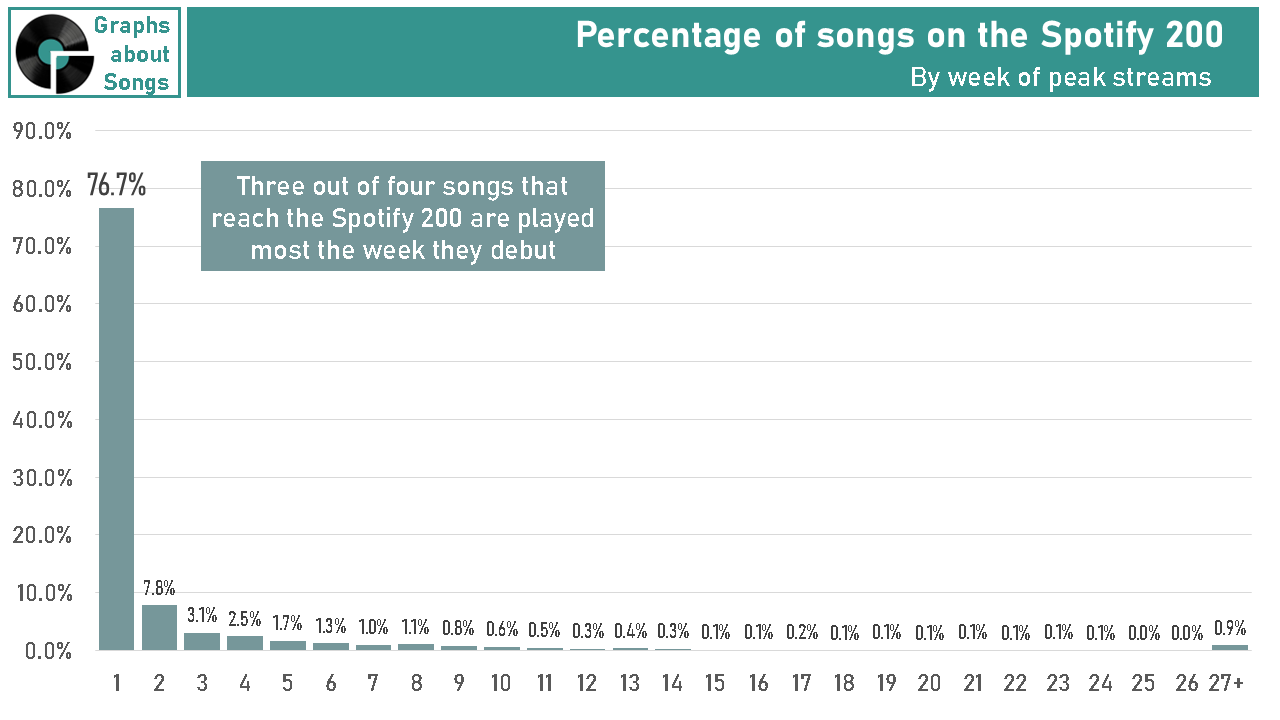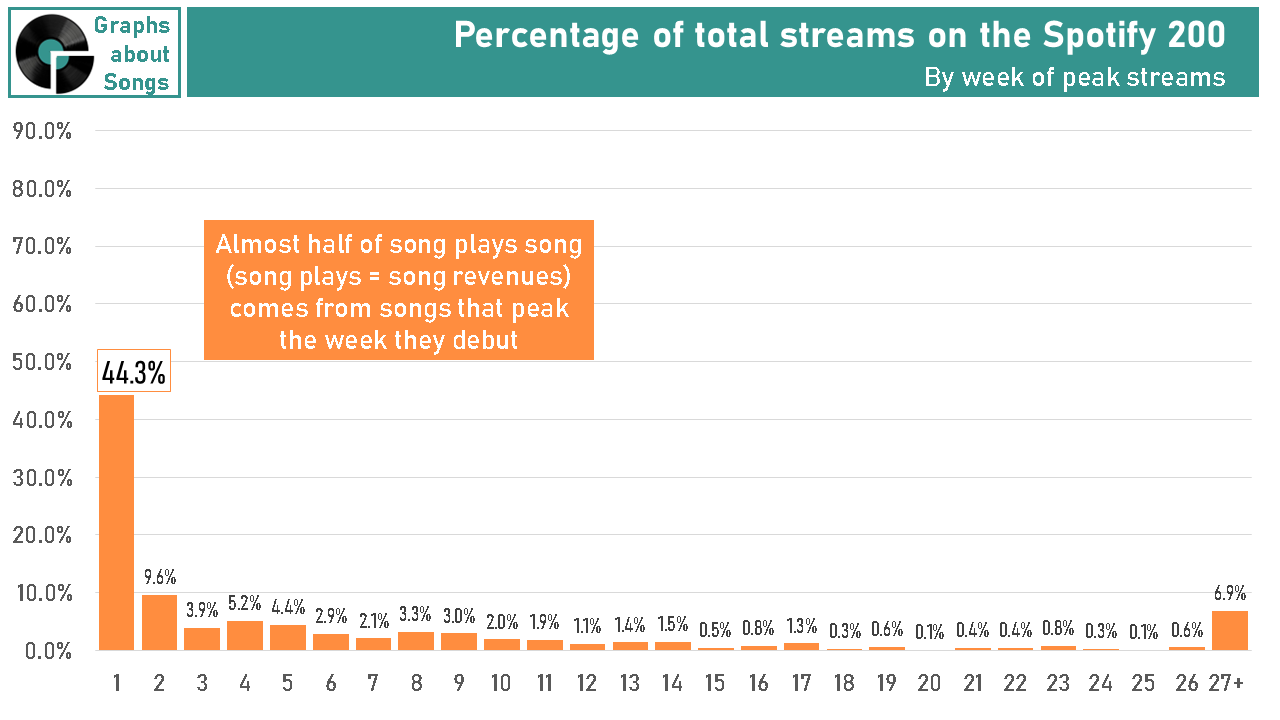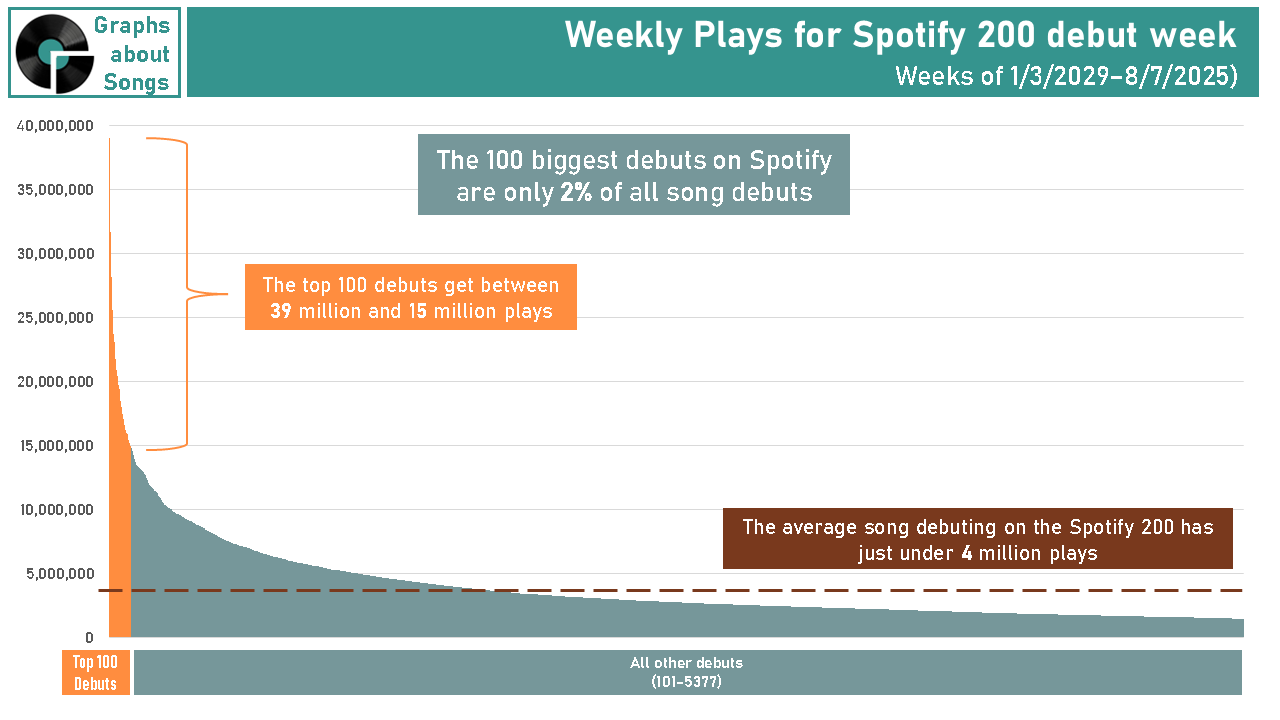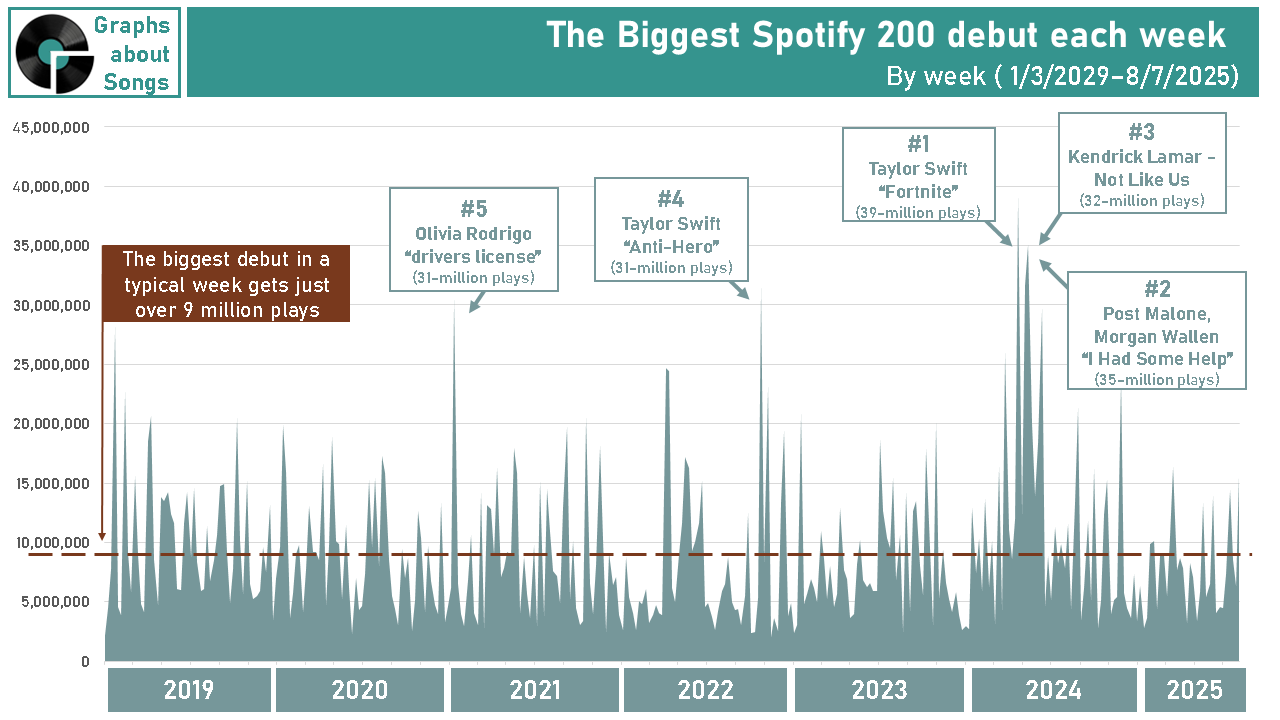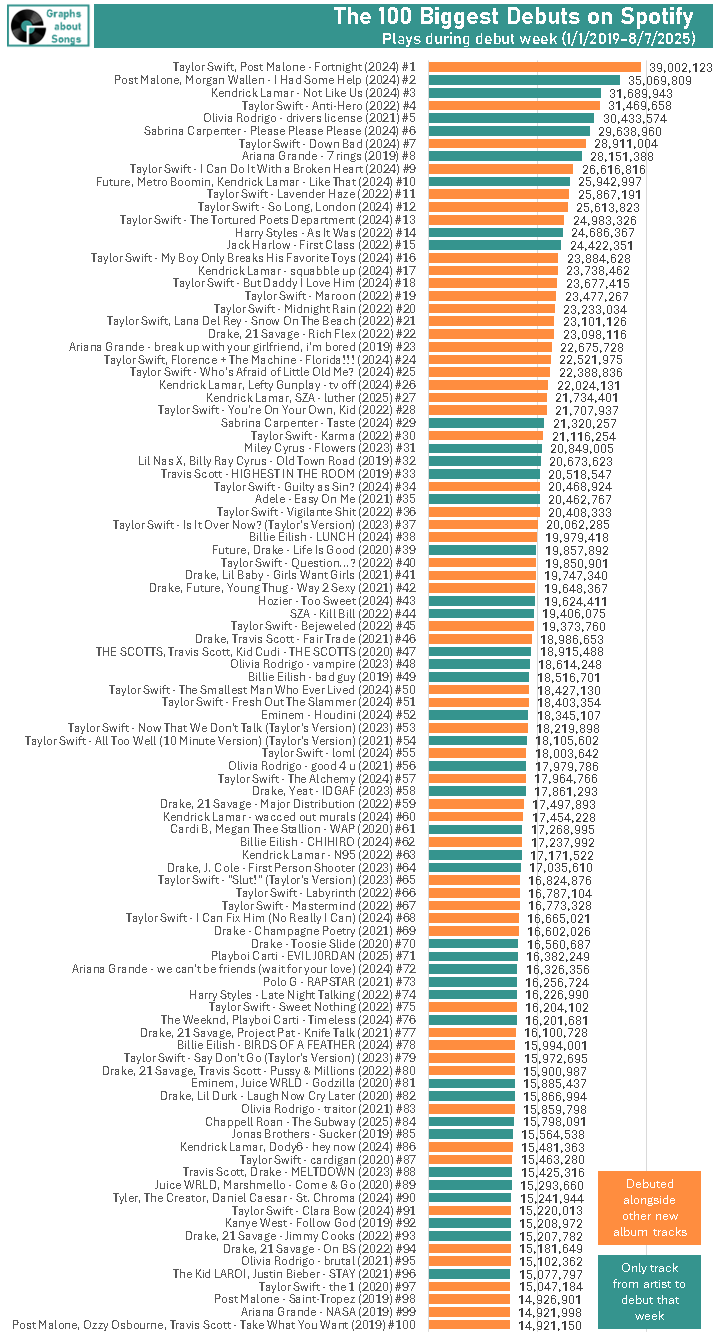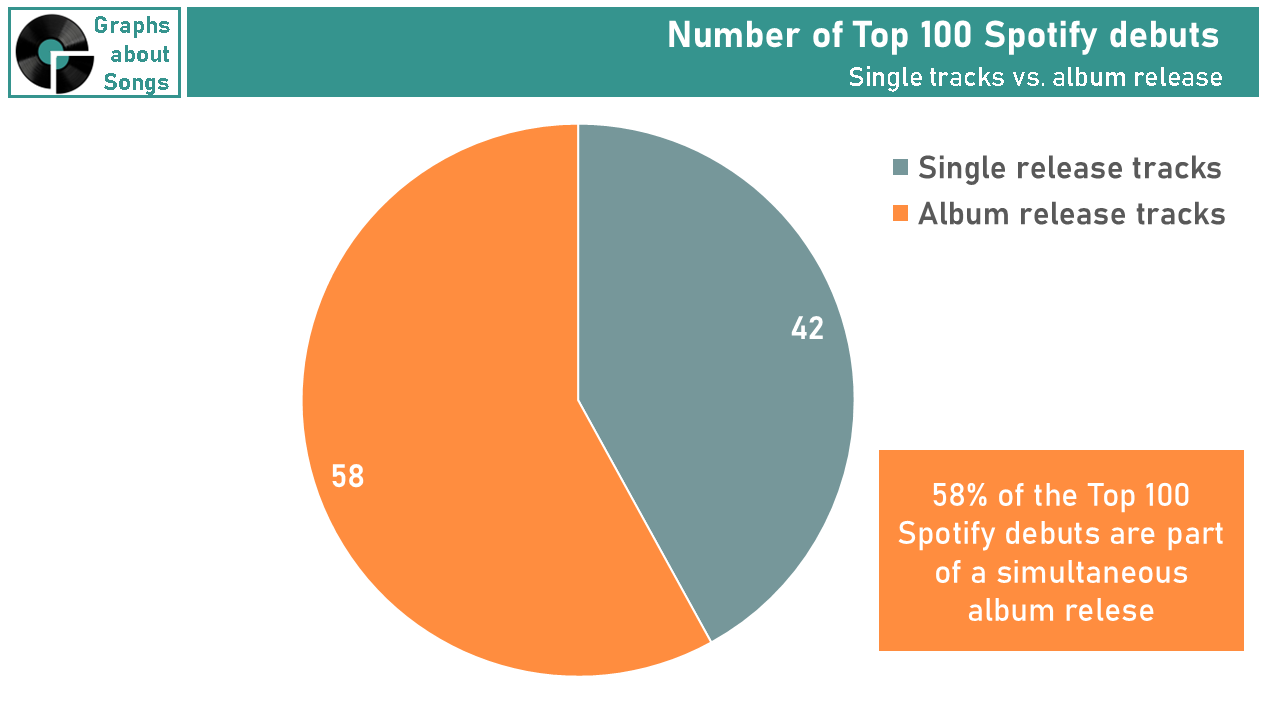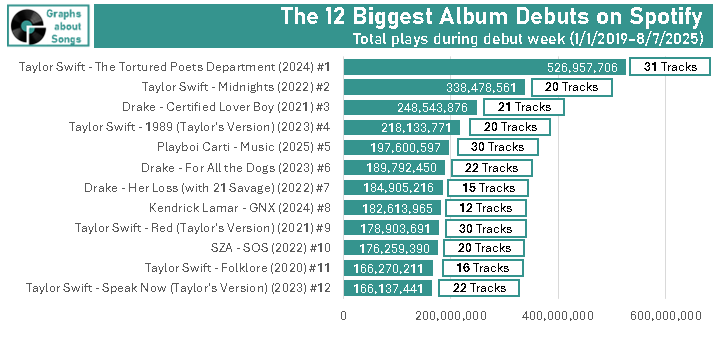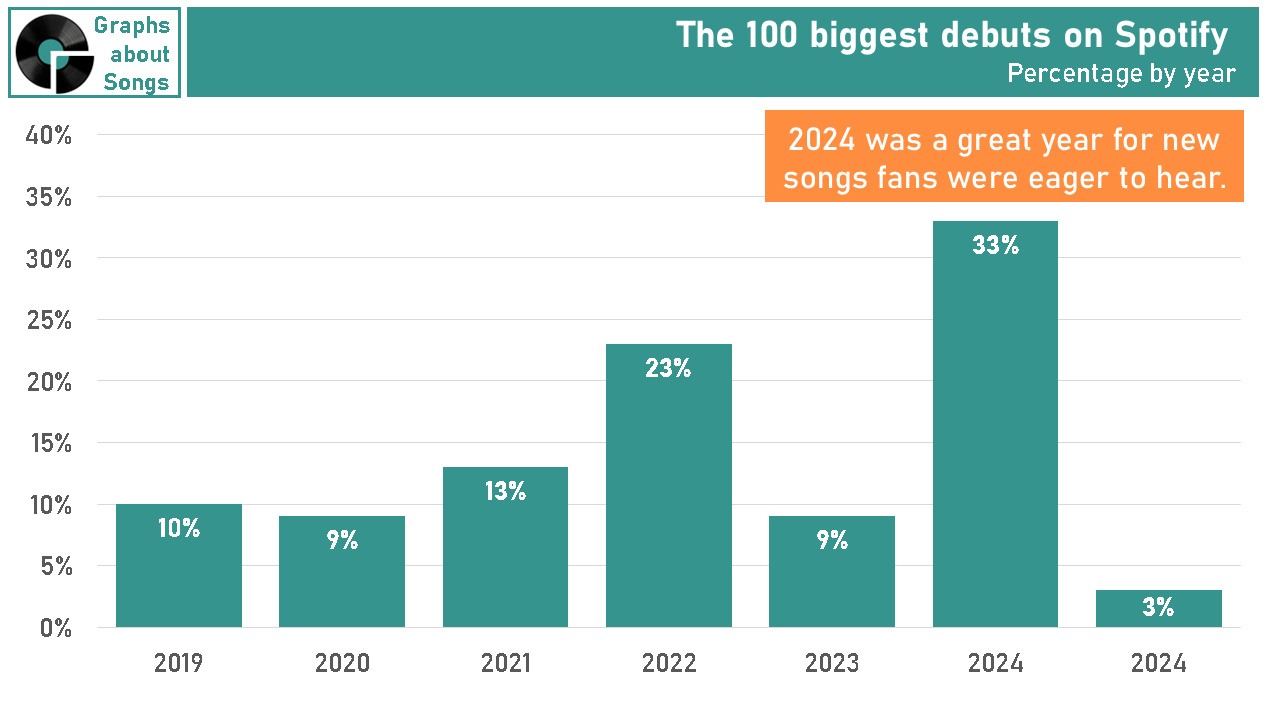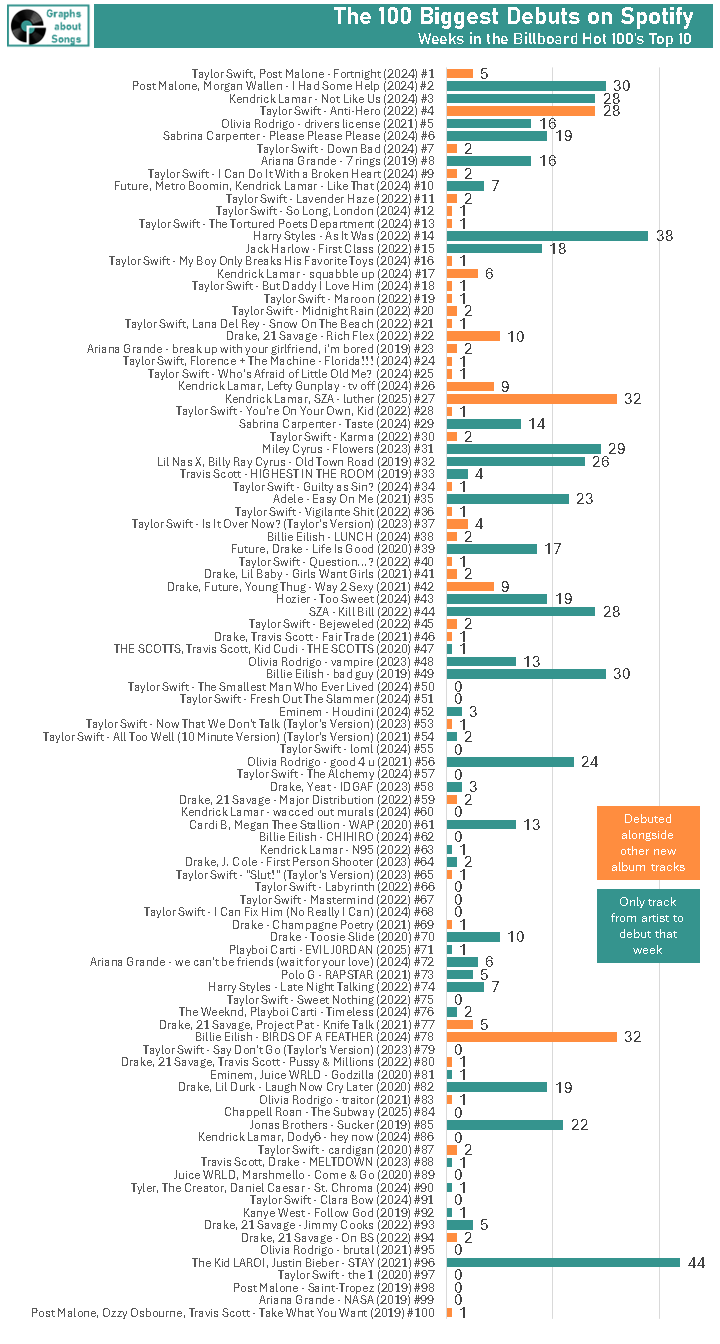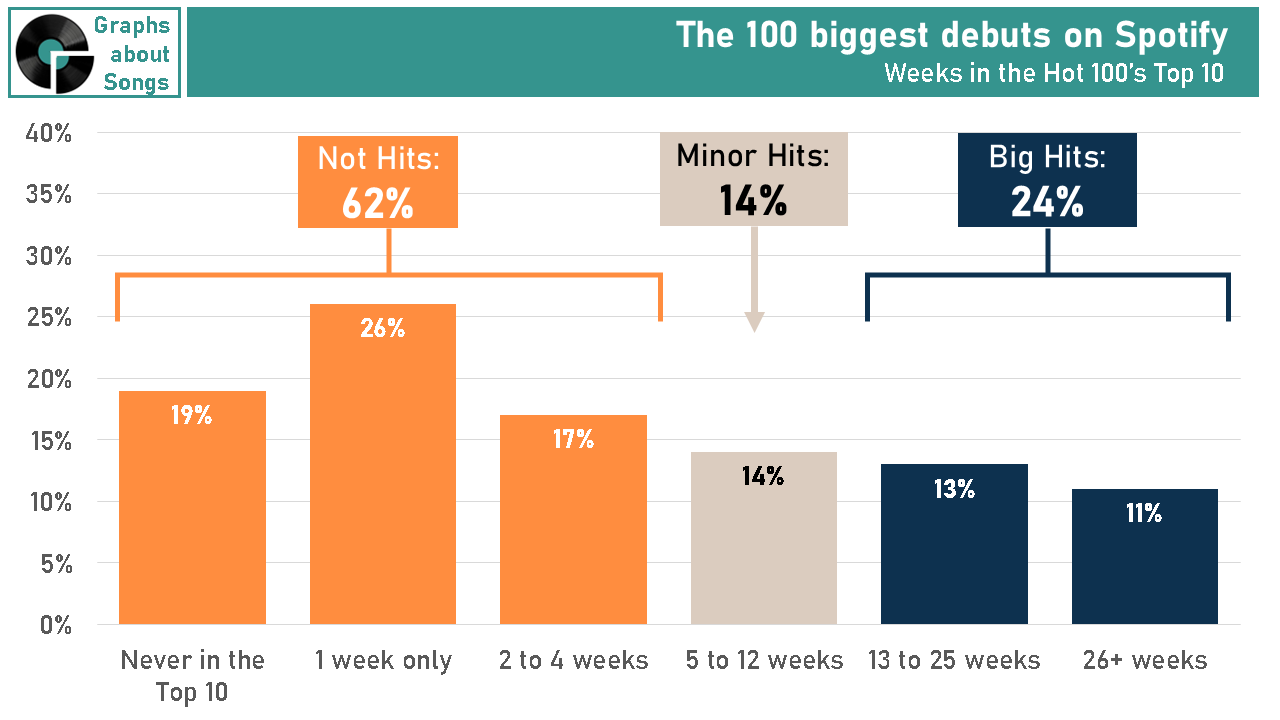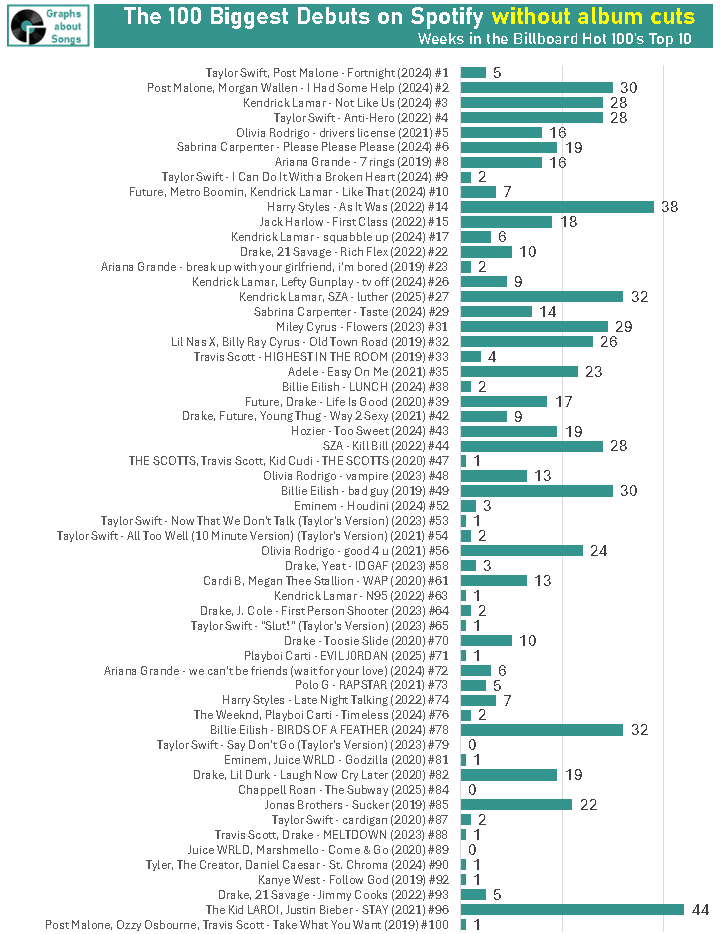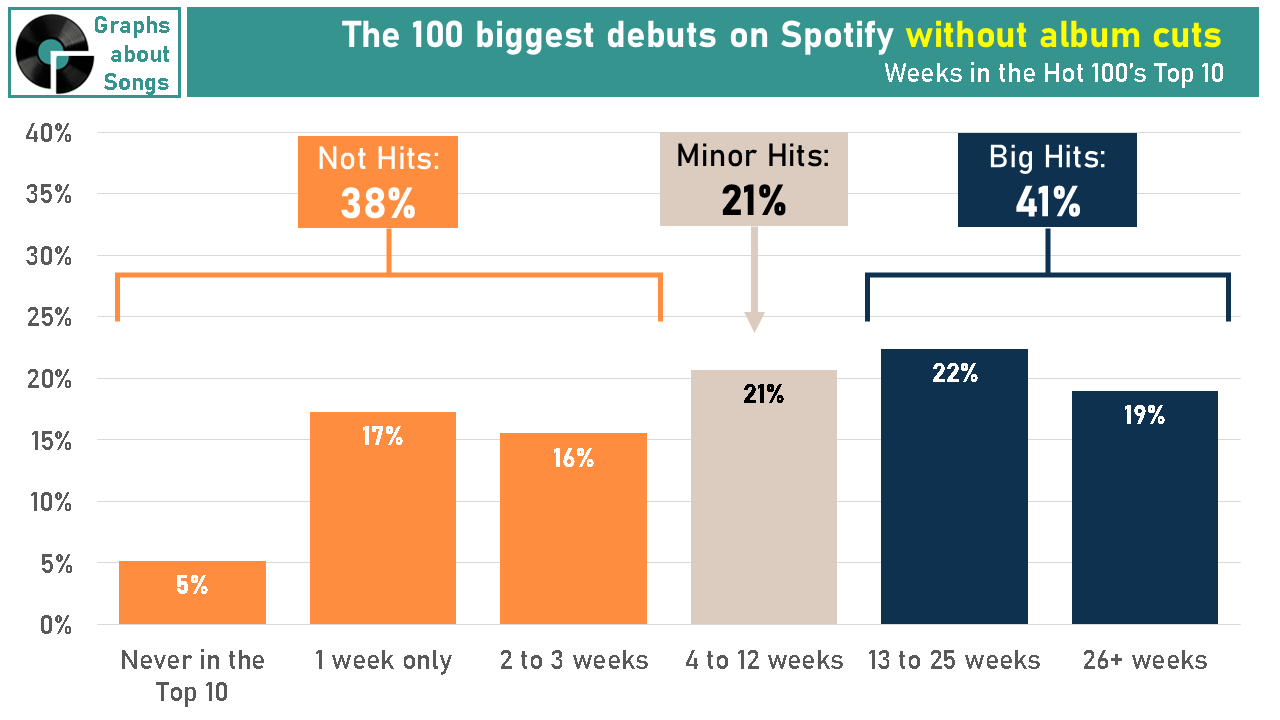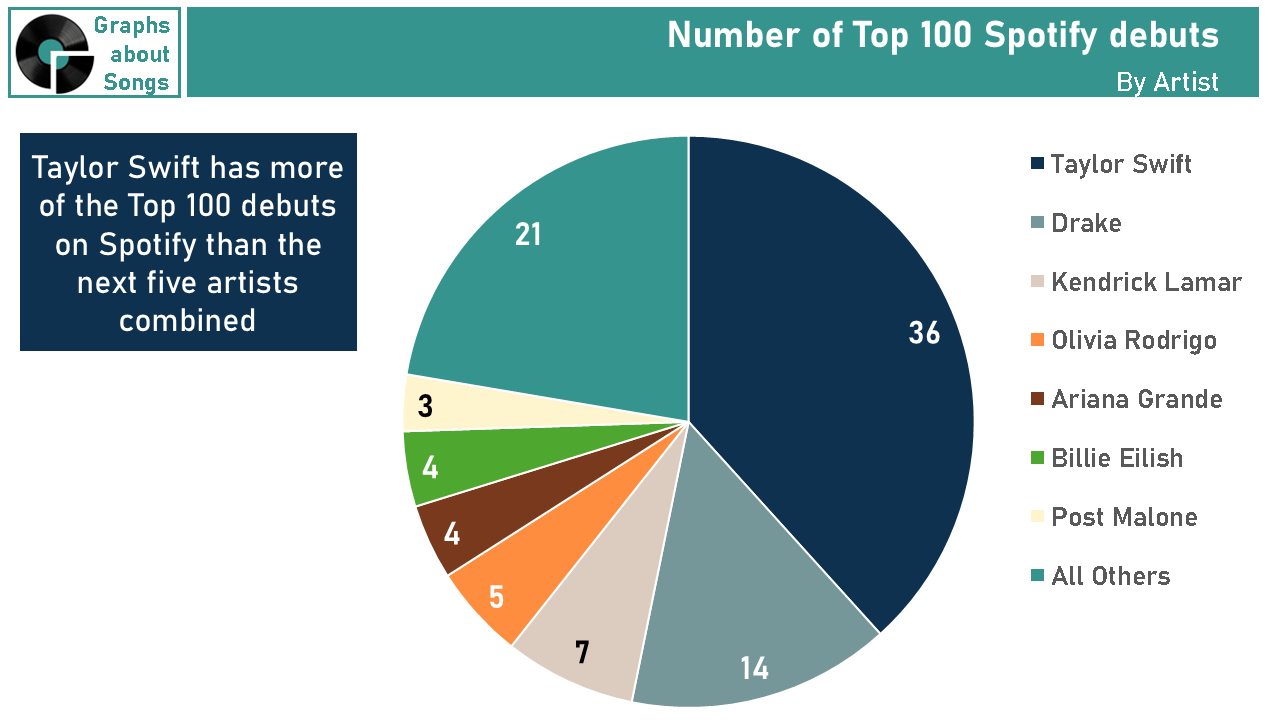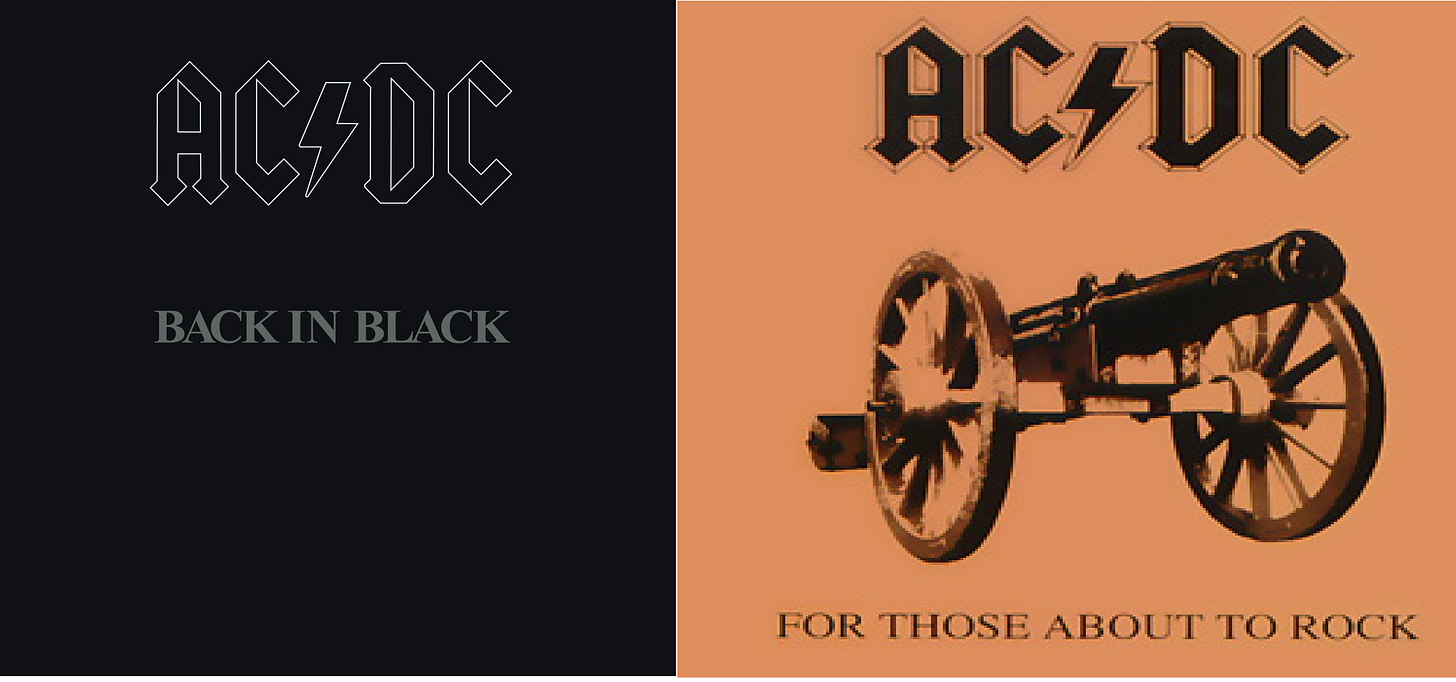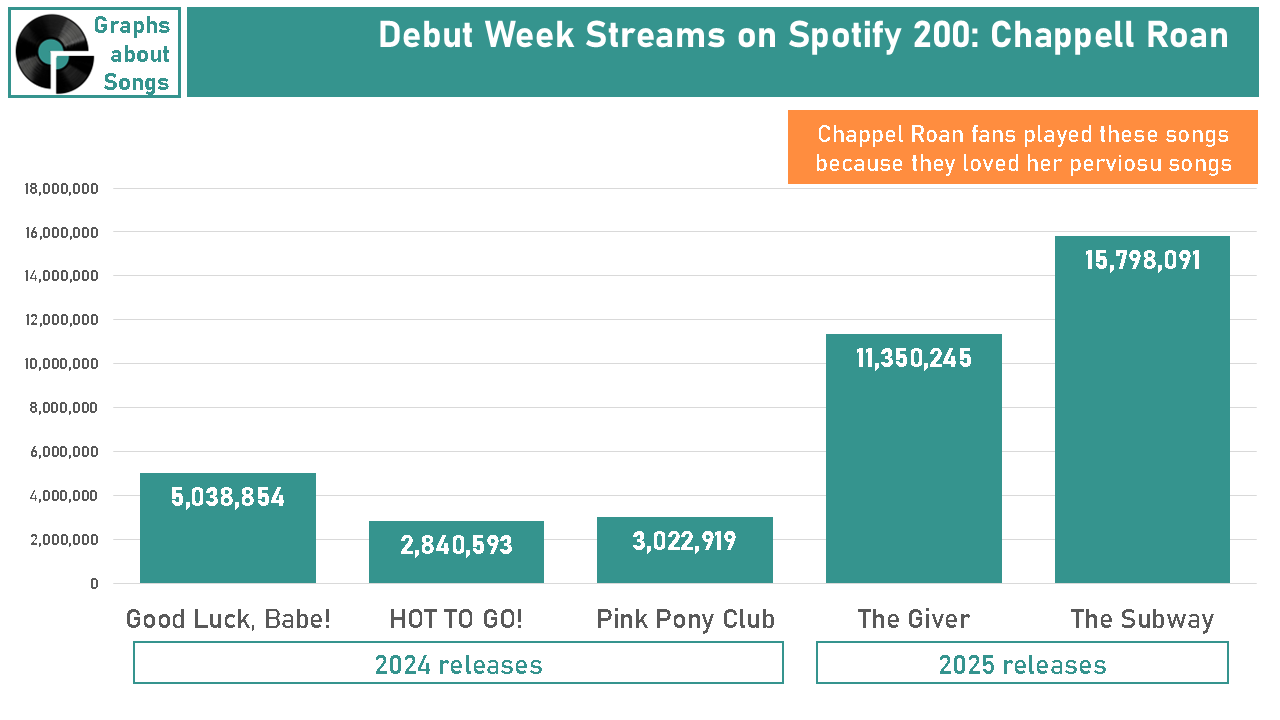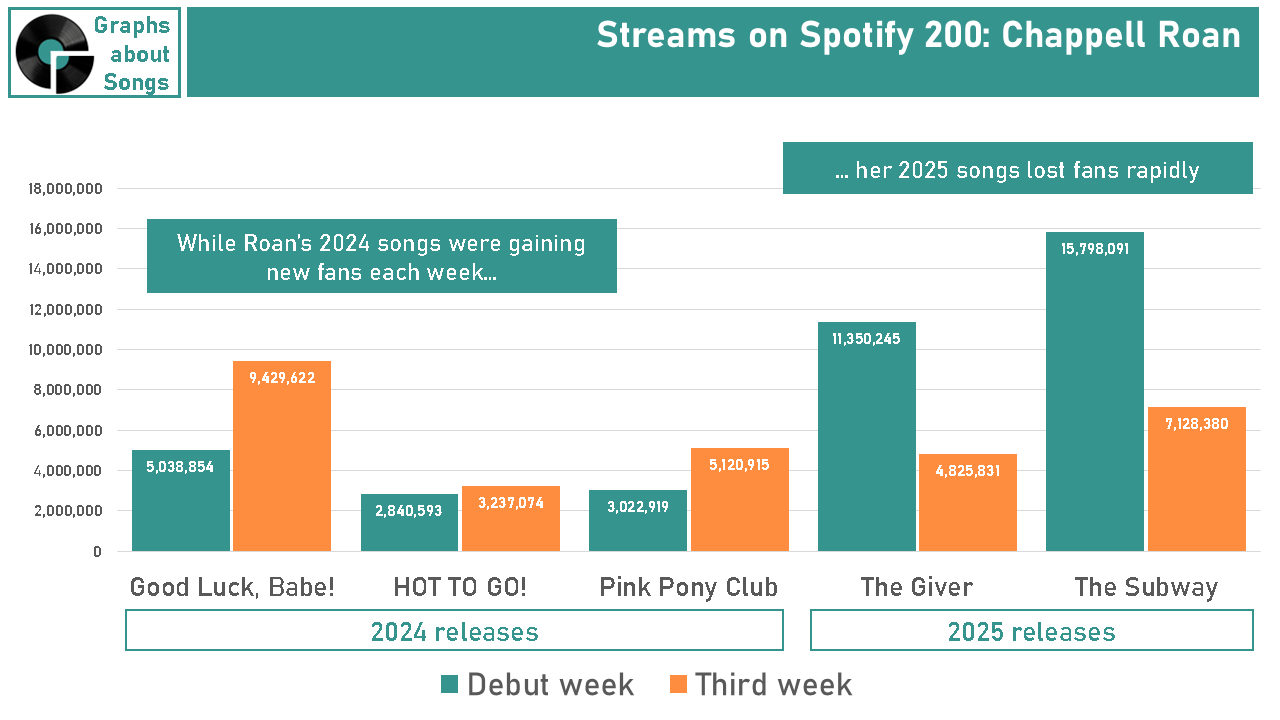Why Swift's Showgirl Isn't Guaranteed to be a Smash
The songs that are big debuts on streaming aren't always the songs that become big hits, even if you're Taylor Swift.
When Taylor Swift releases The Life of a Showgirl on October 3rd, it is preordained that the 12 songs from the new album will instantly become the most streamed songs in history. Billboard will update the Hot 100 showing Swift in positions #1 through #12.
Swift already broke the internet merely by announcing the album.
The only question will be which track is #1. Perhaps her collaboration with Sabrina Carpenter?
Here’s the rub: There is no guarantee that a single song from Life Of A Showgirl will become a massive hit; The kind of song everybody knows. The kind of song you can’t avoid for years.
The biggest hit from Swift’s last record-setting debut, The Tortured Poets Department, only stayed in the Billboard Hot 100’s Top 10 for 5 weeks. “Fortnight” debuted with more Spotify streams in a single week in the U.S. than any song in history. But ultimately “Fortnight” ranked 23rd in total streaming plays and 42nd in radio airplay on Billboard’s year end charts for 2024.
Have you heard “Fortnight” lately?
Meanwhile, the #1 song of the year according to Billboard,, Teddy Swims’ “Lose Control,” first debuted on the Spotify 200 chart with one-seventeenth the number of plays “Fortnight” got.
How likely is it that scoring a big debut on streaming becomes the kind of mass-appeal hit we end up hearing for months?
We’re evaluating all songs in the Spotify 200 from the week ending January 3rd, 2019 through August 7th, 2025. I’ve removed both holiday songs and pre-2019 classics that have reemerged on the Spotify 200, since fans streaming patterns for these songs varies from brand-new songs.
Why Big Debuts Matter
Even in the days of buying albums on vinyl, cassette, and CD, an album’s debut week was often its biggest selling week. Now that streaming music has largely replaced buying music, it’s more important than ever to record labels; revenue to launch with a bang. That’s because labels now make money every time someone plays a song, not just when someone buys it.
We now have the data to prove what was almost certainly always true; fans who actively seek out new music from their favorite artists play those new songs most often when they’re new.
The graph below shows the percentage of a song’s total streams by week. A typical song will receive over 12% of all the plays it will ever receive during its debut week—and then fall every subsequent week. This pattern is largely due to artists’ biggest fans binge listening to their latest releases as soon as they drop.
Looking at it another way, of all the songs that debut on the Spotify 200, three out of four will get played more often during the song’s 1st week than any other week thereafter.
Of course, not all songs are the same. Many songs barely make the Spotify 200 for a week or two and never become mass appeal hits. Those songs don’t make record labels much money.
Instead of looking at songs, let’s look at the total number of times a song ultimately gets played on streaming over its lifetime based on which week it got the most plays. Since labels get paid every time a song gets played, the graph below shows where the money is:
The bottom line. Without a strong debut, it’s significantly less likely your song will generate significant streaming revenue.
What constitutes a big debut?
Since 2019, about 5,000 songs have debuted in the Spotify 200 chart. That’s 16 songs in a typical week. (Many more songs debut on Spotify below the top 200 songs. A tiny few work their way up to join the 200 biggest weekly songs. Most remain obscure.)
That means the top 100 debuting songs we’re reviewing are the top 2% of the already top 200 songs on Spotify.
While the typical song debuts on the Spotify 200 with just over 4 million plays, the 100 biggest debuts garnered between 15 million and 39 million plays the week they dropped.
The chart below shows how many times fans played each week’s biggest debut on Spotify during that song’s debut week: In a typical week, fans play the biggest debut just over 9 million times. When Taylor Swift dropped “Fortnight,” fans played it 39 million times—well over four times a typical week’s biggest debut. ‘
With that context in mind, let’s dig into the 100 biggest debuts on Spotify.
The 100 biggest debuting songs on Spotify
Here are the 100 songs with the most weekly streams on Spotify in the U.S. during the song’s debut week.
Songs that debuted at the same time as other songs from a new album or project are orange.
Songs that debuted as the only single form that artist for that week are teal.
Big albums generate big debuts
You can see why I noted which songs debuted alongside other songs from that artist: Over half of the 100 biggest debuts are tracks from an album drop.
Here are the albums that dominate the 100 biggest debuts:
2024 was a great year for big debuts (2025? Not so much.)
For the period we’re examining, 2024 was by far the best year for massive debuts, accounting for a third of the top 100. Sadly, 2025 so far has been as disappointing as 2024 was exciting: Only three songs on the list are from this year.
So what happened to the 100 biggest debuts?
The following graph shows those same 100 songs with the biggest Spotify debuts, still ordered from top to bottom based on how many times fans played them their debut week. However, this chart shows the number of weeks each song ultimately spent in the Billboard Hot 100’s Top 10.
As you’ll see, there’s seemingly little correlation between how big a song debuts and how big a hit it becomes:
In previous articles, I’ve set a benchmark for a viable mass appeal hit as one that spends four or more weeks in the Hot 100’s Top 10. Six out of ten of the highest debuting songs on Spotify either never reach the Hot 100’s Top 10 at all, or fall out of the Top 10 in less than four weeks.
Only about a quarter of the highest debuting songs remained in the Hot 100’s Top 10 for 13 weeks or more. In other words, only one out of every four songs with a massive debut ultimately became a mass-appeal hit.
Okay, but let’s revisit those album releases…
If you’re a true Swiftie, you’ll likely sample all the new songs on The Life of a Showgirl in October. Relatively quickly, however, you’ll pick a song or two that you particularly enjoy and keep playing them.
If lots of other fans agree with you, that song will become the hit that fans keep streaming week after week, it will become the song radio plays repeatedly. It will become the Millennial classic you hear in the Hampton Inn lobby while making your waffles.
As for the rest of the songs on the album, it’s not fair to expect those album cuts to become hits. Therefore, here’s the same graph showing weeks in the Hot 100’s Top 10, but with those album cuts removed:
Even with an arguably more reasonable comparison, you’ll still notice very little correlation between how big a song is when it debuts and how big a hit that song ultimately becomes.
“Stay” from The Kid LAROI and Justin Bieber barely made our list of 100 biggest debuts, but was a Top 10 hit for 44 weeks, more than any other song on the list.
Meanwhile, Billie Eilish’s “LUNCH” was only in the Top 10 for two weeks.
Despite substantial radio airplay, Eminem’s “Houdini” was only Top 10 for three weeks.
As previously mentioned, the #1 all time biggest debuting song on Spotify, which Americans played over 39 million times the week it dropped, Taylor Swift’s “Fortnight,” fell out of the Hot 100’s Top 10 after a scant five weeks.
Well over a third of those 100 biggest debuts still didn’t become hits at all, while only four in ten did become actual big hits.
Seven superstar artists dominate the biggest debuts
Among the 100 songs with the highest debut streams, over one third are by Taylor Swift. That’s more songs than the next four artists combined: Drake, Kendrick Lamar, Olivia Rodrigo, and Ariana Grande. Add in Billie Eilish and Post Malone and just seven artists own three out of four of the 100 biggest debuting songs.
It’s no coincidence that established artists with massive fan bases dominate the biggest debuts. When someone streams a song as soon as it’s released, they have never heard that song before. They’re not streaming the song because they already like it. They’re streaming the song because they love the artist and want to hear what they’ve created.
A song’s debut week streams aren’t based on how much people like that song---they’re based on how much fans like the artist’s previous songs.
This concept isn’t new to the streaming era.
Music chart maestro Chris Molanphy coined the concept of “The AC/DC Rule,” demonstrating a band's follow-up album after a highly acclaimed album can achieve a higher chart position, even if it ultimately sells fewer copies.
In his Hit Parade podcast for Slate, Molanphy cites that AC/DC’s For Those About to Rock (We Salute You) was a #1 best-selling album, while their previous album Back in Black only reached #4 among best-selling albums.
Back in Black ultimately sold 27 million copies in the U.S. and globally is second only to Michael Jackson’s Thriller and is an icon in the Rock album pantheon.
Meanwhile, For Those About to Rock (We Salute You) fizzled out after selling only 4 million copies in the U.S. It’s not exactly their most lauded work.
Fans initially bought the latter album because they loved the former album—and were hoping for more of what they loved.
While the concept itself isn’t new, the streaming era has made this phenomenon both fare more common and applicable to individual songs.
There’s one artist that showcases this principle precisely.
Chappell Roan and the Case of the Lousy Follow Ups
Consider Chappell Roan, one of the biggest artists to emerge in 2024.
“Good Luck, Babe!” debuted on the Spotify 200 in the U.S. with just over 5 million plays for its first week, but ultimately was the 18th biggest song for all of 2024, according to Billboard’s year end chart.
“HOT TO GO!” despite lackluster radio airplay, was Billboard’s 53rd biggest song of last year.
“Pink Pony Club,” became a major hit earlier this year, spending 14 weeks in the Billboard Hot 100’s Top 10.
These songs helped Roan develop a sizable and passionate fan base. Because they loved these three songs, Roan fans are now eager to try out any new songs she releases, in hopes they love her new songs as much as they love her previous songs.
So when Roan released “The Giver” and later “The Subway,” fans played these songs during their debut week a lot more than they played her previous songs when they debuted back when Roan was largely unknown.
Based on subsequent weeks’ steams, Chappell Roans fans were sorely disappointed.
“The Giver” fell from over 11 million Spotify plays the week it debuted to under 5 million plays in its third week. That’s a 57% drop in weekly streams in just two weeks.
“The Subway” fell from almost 16 million plays its debut week to just over 7 million plays in its third week. That’s a 55% drop in weekly steams in just two weeks.
Both songs fell out of the Billboard Hot 100’s Top 10 the week after they debuted.
In comparison, “Good Luck Babe!” by its third week had more weekly plays (over 9 million) than did both “The Giver” and “The Subway.”
Why does this concept matter?
If you’re among my readers in radio programming, your job depends on finding songs that a lot of your listeners will know and love. Simply examining what’s big on streaming this week could lead you to playing unpopular songs by popular artists—especially if it’s a big debut from a big artist that fans ultimately reject.
It’s why The Hit Momentum Report, in which I analyze streaming for radio programmers, emphasizes the songs folks keep playing week after week.
If you’re among my fellow chart geeks, you already know the frustration of seeing songs debut high on the Hot 100, only to vanish the following week. Since streaming now dominates how we consume new music, the Hot 100 now reflects the ease with which fans can sample their favorite new artists’ songs simply by pulling one’s phone out of one’s pocket. Today’s instant Top 10 debuts reflect the artist’s popularity. Ultimately, its staying in the Top 10 that reflects the individual songs’ popularity.
So while it’s inevitable that Taylor Swift will own the top of the chart this October, keeping herself at the chart’s summit will depend solely on the strength of her songs.
Personally, I’m hoping her next effort lasts longer than “Fortnight.” We need something better than “Ordinary.”
If you’re a radio programmer, learn more about The Hit Momentum Report here.
If you’re a chart geek, subscribe below and select the “FREE” option and I’ll email you more Graphs About Songs.
Data sources for this post:
Wikipedia’s Billboard Hot 100 Top 10 singles: https://en.wikipedia.org/wiki/List_of_Billboard_Hot_100_top-ten_singles
Spotify 200, United States, weeks ending January 3rd, 2019 through August 7th, 2025: https://charts.spotify.com/charts/overview/us
Wikipedia;s List of Best-Selling Albums: https://en.wikipedia.org/wiki/List_of_best-selling_albums



